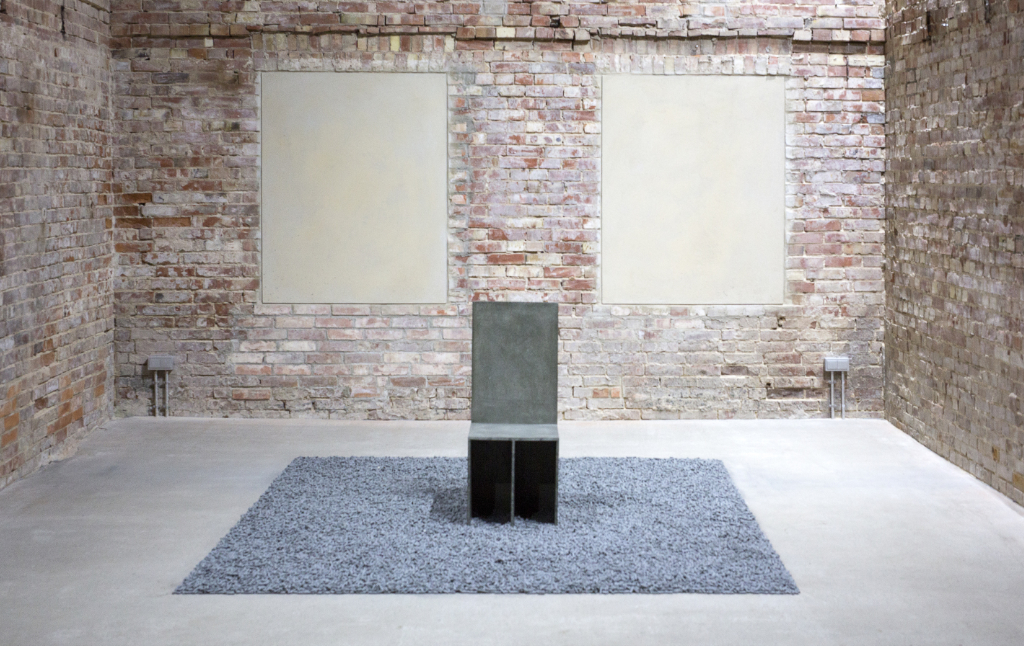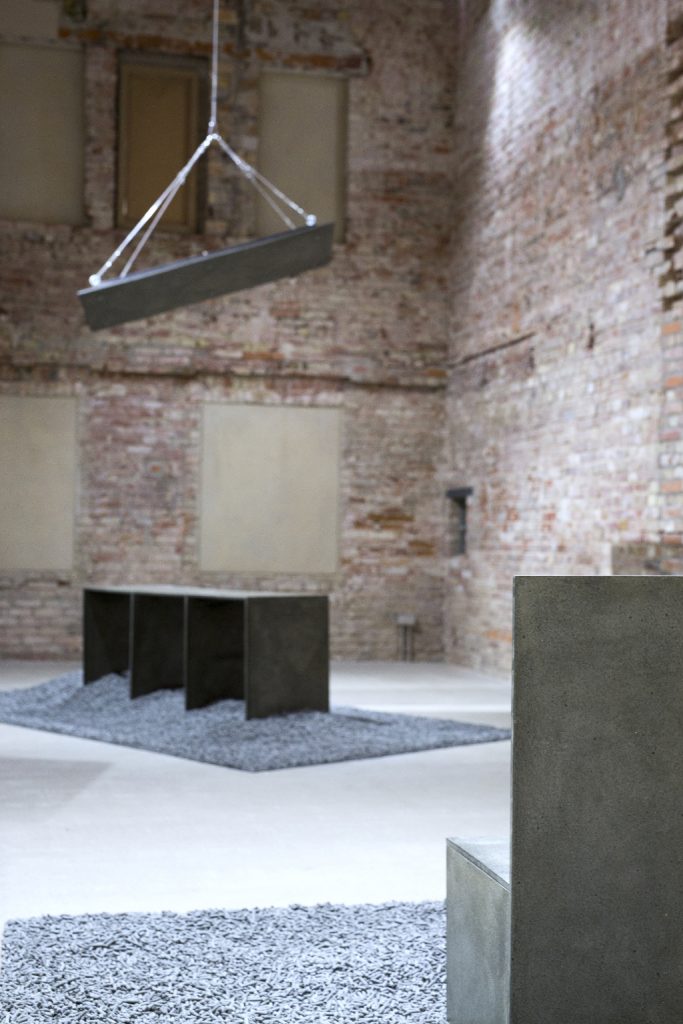Text by Tuçe Erel

Language has been granted too much power. The linguistic turn, the semiotic turn, the interpretative turn, the cultural turn: it seems that at every turn lately every “thing”—even materiality—is turned into a matter of language or some other form of cultural representation. Language matters. Discourse matters. Culture matters. There is an important sense in which the only thing that does not seem to matter anymore is matter [1].
—Karen Barad
The boundaries between arts, humanities, and science are getting thinner since the 1970s thanks to scholars like Donna Haraway, Karen Barad, Jane Bennett, and many more. The fluidity between these different branches enabled transdisciplinarity in artistic research and artist-scientist collaborations. The scope of artistic research is vast, but in this text, I am focusing on specific artistic research that uses scientific methodologies and merges them with speculative design.
Furthermore, the focus of this text is to discuss matter and its materiality within the frame of critical feminist posthumanism, which allows inclusivity of non-human agency and explores the more-than-human consciousness, altering materiality and “storied matter [2].” My discussion will eventually focus on speculative design, and I aim to unpack the relationality of the duo exhibition Matter to Matter [3].
Science fiction, world-making, and storytelling transformed not only artistic practices but also scholarly thinking. Donna Haraway’s A Cyborg Manifesto: Science, Technology, and Socialist Feminism in the Late Twentieth Century [4] proposed SF (a term that encompasses science fiction, speculative fabulation, and string figure) as a methodology to shift perspectives and ways of thinking beyond the Western construct of realism and materialism.
As a critique of Marxist materialism, the new materialism methodology conveyed in the academic world influenced artistic practices and methods. Haraway’s SF methodological toolset includes playfulness, speculation, and storytelling. Haraway’s riddle-like quote explores the stories of the matter:
It matters what matters we use to think other matters with; it matters what stories we tell to tell other stories with; it matters what knots knot knots, what thoughts think thoughts, what descriptions describe descriptions, what ties tie ties. It matters what stories make worlds, what worlds make stories [5].
Furthermore, Serenella Iovino and Serpil Oppermann’s ecocritical tool, “storied matter,” also widens the imagination, storytelling, and understanding of sentient beings beyond human consciousness. “Storied matter” includes non-human and more-than-human agents and creates a mutuality with humans. The matter carries its embodied story to different generations and beings. Their stories enable and inspire artists to speculate and narrate through their lenses. Therefore, speculative design manifests as another tool for artists to engage matter and materiality critically [6].
The “speculative design” [7] concept, which was coined by Anthony Dunne and Fiona Raby, is a methodological playground to imagine and create other worlds and alternatives. Speculative design’s methodology starts with “what if” questions to challenge and propose realities and materialities.
The Matter to Matter exhibition appropriates these methods and thoughts, bringing together two projects, Reflecting on Altering Matter by Inga Aleknavičiūtė and You and I, You and Me by Mindaugas Gapševičius and Maria Safronova Wahlström. Within the framework of speculative design methodologies—which suggest futuristic, hybrid, and fictional possibilities and ideas—this dual exhibition questions and proposes alternatives to the human perception of senses, matter, material, and objects.
Reflecting on Altering Matter is an artistic research on deinking sludge, a residual material leftover from the paper-recycling process. The material has been mainly used for concrete and brick making or energy production so far. The project proposes different ideas and alternative ways of using deinking sludge for objects and furniture that would be integrated into daily life. The artist Inga Aleknavičiūtė invites the audience to explore deinking sludge, which “primarily consists of inorganic mineral fillers, short cellulosic fibers and fines, coating, ink particles, extractive substances, and deinking additives.” [8]



Right: You and I, You and Me, Mindaugas Gapševičius & Maria Safronova Wahlström. Photo credit: Maria Safronova Wahlström

The consistency of this mud-like material impacts and indicates the form and structure of the objects. Aleknavičiūtė’s selection of objects and furniture is not coincidental. Her artistic research and experimentation with deinking sludge became a table and chair. The artist’s choice of object is a gesture toward a cyclic closure—the newspaper one could read while sitting at this table will eventually become the table itself. Reflecting on Altering Matter explores the possibilities of deinking sludge as an alternative material for artists/designers.
Jane Bennett explains that electricity, or the stream of vital materialities called electrons, is always on the move … and sometimes it chooses its path on the spot, in response to the other bodies it encounters and the surprising opportunities for actions and interactions that they afford [9]. Mindaugas Gapševičius and Maria Safronova Wahlström speculate on the possibility of communication through electricity, and they explore the encounters that Bennett mentioned in the performative and interactive project You and I, You and Me.
The project is realised in collaboration with jewellery designer Helga Mogensen and shoe designer Leon Crayfish, and it questions the perception of the environment through electricity. The project utilises interactive and hybrid wearable objects, inviting the audience to experience and explore the impact of electricity. For example, how far could electricity help in understanding the other? Is it possible to alter human senses by electric impulses?
Based on the research on brain-to-brain interfaces, including the study A Brain-to-Brain Interface for Real-Time Sharing of Sensorimotor Information [10] by Miguel Pais-Vieira et al., the headwear designed for the project uses the electrical impulses that are detected while using electroencephalography (EEG), and brain stimulation is triggered by passing DC current through electrodes (tDCS)—a noninvasive method to treat the depressive disorder, increase empathic abilities, or decrease antisocial behaviour in violent offenders.
The headwear design, which is embroidered with the electronic setup, reminds of historical hat patterns and shapes. However, comparing this design to the symbolism of the Renaissance era, in which the hat shapes represent identity and economic class, the headwear of You and I, You and Me, imagine creating a universal communication tool—human to human and human to non-human beings.
The set of jewellery in the project reveals the fact that the human body produces low levels of electric current that can power a small LED (which is embedded in rings, necklaces, and bracelets) [11]. Being very sensitive, the flashing of the LED depends on humidity, temperature, contact with the body, and other parameters that affect the components used for the circuit, or perhaps the parameters of our body change and, with them, the LED blinking. Everyone may find their own answers.
The shoes in the project showcase another speculative idea that human excess heat could be used to produce electricity. In these series of objects, artists question the possibility of using the excess heat to charge their shoe synthesisers. What if human excess heat were used to charge cellphones, or chips embedded in the bodies?
The participatory layer of the artwork takes the audience to a future scenario where humans, computing machines, and various hybrids share the space they inhabit. Senses are altered, and some have an inextricable linkage to computing devices. In this speculative design framework, a sci-fi-storytelling toolset reveals itself, and artists suggest that humans take the responsibility of reshaping social ties to avoid being controlled by corporations and machines.
The Matter to Matter exhibition at Biorama Weisse Villa brought together Reflecting on Altering Matter and You and I, You and Me, which were nurtured and inspired by posthumanist discourses, speculative design, and artistic research methodologies. Both projects raised questions and proposed ideas to look at matter and material from different angles. These ideas and proposals are futuristic, yet also invite the audience, producers, engineers, and scientists to look outside of the box and imagine a different way of thinking beyond an anthropocentric approach.






